About A Puzzle in 4D
Host Institution/Pl: Institute for Oriental and European Archaeology (OREA), Austrian Academy of Sciences (ÖAW)
Project start- and end date: 01/02/2015 - 31/01/2020
Funding: Österreichische Nationalstiftung für Forschung, Technologie & Entwicklung (DH 2014/12) & EU infrastructure project ARIADNE (FP7-313193)
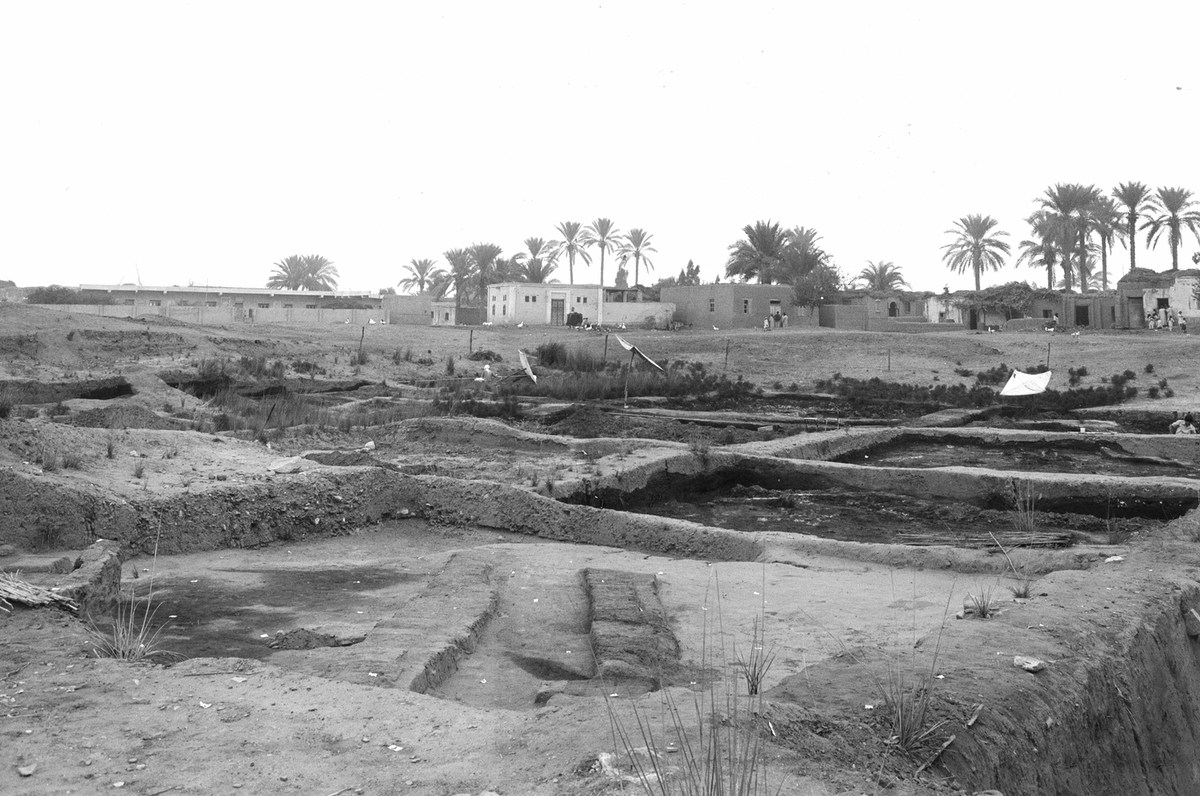 Figure 1: Excavations in area A/II in the year 1980 with the village of Tell el-Daba in the background (M. Bietak, © copyright ÖAI/OREA archive).
Figure 1: Excavations in area A/II in the year 1980 with the village of Tell el-Daba in the background (M. Bietak, © copyright ÖAI/OREA archive).
 Figure 2: Bull leaping frieze from area H/I (reconstruction) (drawing by M. A. Negrete Martinez after M. Bietak et al. 2007, fig. 60).
Figure 2: Bull leaping frieze from area H/I (reconstruction) (drawing by M. A. Negrete Martinez after M. Bietak et al. 2007, fig. 60).
Image Gallery
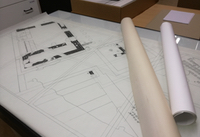
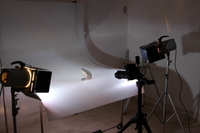
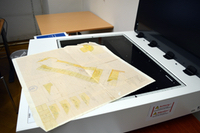
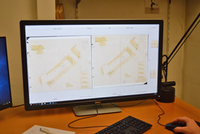
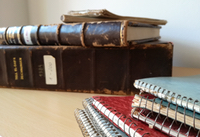
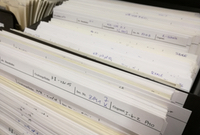
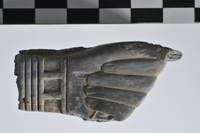
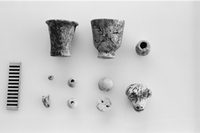
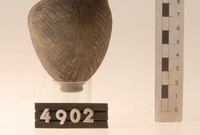
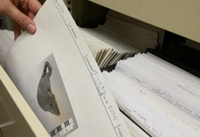
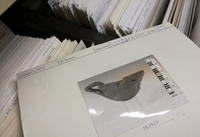
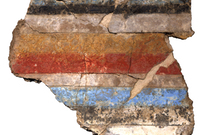
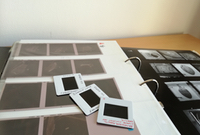
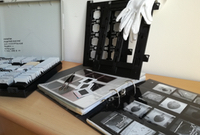
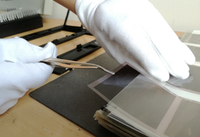
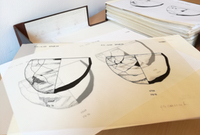
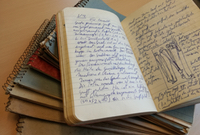
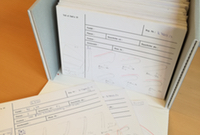
For an introduction to the A Puzzle in 4D project take the interactive guided tour (story map).
The overall aim of A Puzzle in 4D was the digital long-term preservation of the knowledge and information from the Austrian excavations at Tell el-Daba by preparing them for long-term archiving based on national and international standards and in accordance with open-access policies.1 This project was designed as a case study for the development of a repository for archaeological data at the ÖAW ACDH-CH (Austrian Academy of Sciences, Austrian Centre for Digital Humanities and Cultural Heritage).
Tell el-Daba (TD) is an archaeological site situated in the eastern Nile delta regions of Egypt revealing archaeological evidence from the 12th to 18th dynasties (early second millennium BC)2 (Fig. 1). Excavations reveal that there was a wealthy society with contacts to many parts of the eastern Mediterranean. A unique connection to Minoan culture has been shown through thousands of fragments of Minoan-style wall paintings discovered in one of the TD palaces, depicting e.g. scenes with bulls and bull-leapers which have become a trademark of the site (Fig. 2)
For more information see: Archaeological Site
Since 1966 excavations at TD were carried out by the archaeologist Manfred Bietak for the Austrian Archaeological Institute (ÖAI) resulting in records from 50 years of fieldwork campaigns.3 The archaeological discipline has seen major changes during this period of time, most notably developments in information technology have caused a shift from analogue to digitally-born data. As a result, the TD archive at OREA contains a huge and heterogeneous resource of digital and analogue photographs, plans, drawings and written documentation.
Today, the preservation of parts of the datasets and information on TD is being challenged. The negatives of black and white photos from earlier fieldwork campaigns are deteriorating and showing damages due to their age. Data loss may occur due to fragmented legacy research data (e.g. digital site maps) and incompatibility of formats as well as loss of knowledge about the spatial and temporal relationships of archaeological entities.
The aim of the A Puzzle in 4D project was to provide long-term preservation for the rich archaeological resources of the excavations at Tell el Daba in Egypt. Digital and non-digital excavation data were enriched with metadata and prepared for long-term archiving and open-access online publication.4 For information on the creation of the digital archive and workflows see here.
Within the A Puzzle in 4D project, one area of the excavations (F/I) was used as a case study for developing a methodology for the spatial and temporal expert analysis in a 4-dimensional Archaeological Information System. This system is based on a GIS (Geographical Information System) which has been connected with a tool to analyse the stratigraphic sequence of the archaeological evidence. Stratigraphy is the analysis and description of events which form an archaeological site. The tool which has been developed in this project to analyse the spatial and temporal sequence is a so-called Harris Matrix Composer (HMC+).
The maps and 3D models resulting from the spatio-temporal analysis formed the basis for a comprehensive virtual reconstruction of the site, making the archaeological evidence of one area accessible online for research as well as the interested public.
Bibliography
-
E. Aspöck – K. Kopetzky – B. Horejs – M. Bietak – M. Kucera – W. Neubauer, A Puzzle in 4D. Digital Preservation and Reconstruction of an Egyptian Palace. Proceedings of the Digital Heritage International Congress held in Granada, 28 September–2 October 2015, doi: 10.1109/DigitalHeritage.2015.7419596.
E. Aspöck (in press), ‘Introduction: Old excavation data – what can we do?’. in: ‘Old excavation data – what can we do?’. Proceedings from workshop at 10th ICAANE. OREA Series (Vienna, Austrian Academy of Sciences Press).
E. Aspöck – G. Hiebel – K. Kopetzky – M. Ďurčo (in press), ‘A puzzle in 4D: Archiving digital and analogue resources of the Austrian excavations at Tell el Daba, Egypt’, in: ‘Old excavation data – what can we do?’. Proceedings from workshop at 10th ICAANE. OREA Series (Vienna, Austrian Academy of Sciences Press).
E. Aspöck – S. Štuhec – K. Kopetzky – M. Kucera (eds.) (in press), ‘Old excavation data – what can we do?’. Proceedings from workshop at 10th ICAANE. OREA Series (Vienna, Austrian Academy of Sciences Press).
-
M. Bietak, Tell el-Dabca V. Ein Friedhofsbezirk der Mittleren Bronzezeitkultur mit Totentempel und Siedlungsschichten, Teil I, UZK 8 (Vienna 1991).
E. Czerny, Tell el-Dabca IX. Eine Plansiedlung des frühen Mittleren Reiches, UZK 15 (Vienna 1999).
E. Czerny, Tell el-Dabca XII. „Der Mund der beiden Wege“. Die Siedlung und der Tempelbezirk des Mittleren Reiches von Ezbet Ruschdi, 2 vols., UZK 38 (Vienna 2015).
Hein – P. Janosi, Tell el-Dabca, XI: Areal A/V, Siedlungsrelikte der späten Hyksoszeit, UZK 21 (Vienna 2004).
Forstner-Müller, Tell el-Dabca XVI. Die Gräber des Areals A/II von Tell el-Dabca, UZK 28 (Vienna 2008).
V. Müller, Tell el-Dabca XVII. Opferdeponierungen in der Hyksoshauptstadt Auaris (Tell el-Dabca) vom späten Mittleren Reich bis zum frühen Neuen Reich, 2 vols., UZK 29 (Vienna 2008).
R. Schiestl, Tell el-Dabca XVIII. Die Palastnekropole von Tell el-Dabca. Die Gräber des Areals F/I der Straten d/2 und d/1, UZK 30 (Vienna 2009).
-
M. Bietak, Avaris. The Capital of the Hyksos (London 1996).
M. Bietak – J. Dorner – P. Janosi, Ausgrabungen in dem Palastbezirk von Avaris. Vorbericht Tell el-Dabca/cEzbet Helmi 1993-2000, Ägypten und Levante 11, 2001, 27–119.
M. Bietak – N. Math – V. Müller, Report on the Excavation of a Hyksos Palace at Tell el-Dabca/Avaris, Ägipten und Levante 22/23, 2012/2013, 17–53.
M. Bietak – I. Forstner-Müller, Ausgrabung eines Palastbezirkes der Tuthmosidenzeit bei cEzbet Helmi/Tell el-Dabca. Vorbericht für Herbst 2004 und Frühjahr 2005, Ägypten und Levante 15, 2006, 65–100.
-
E. Aspöck, Moving towards an Open Archaeology: projects, opportunities and challenges. Mitteilungen der Vereinigung Österreichischer Bibliothekarinnen und Bibliothekare 72(2) 2019, 538-554. doi: 10.31263/voebm.v72i2.3249.
E. Aspöck, ARIADNE and ARIADNEplus in Austria. In: Julian Richards and Franco Niccolucci, The ARIADNE impact, 51-62. Budapest: Archaeolingua, 2019.
E. Aspöck - G. Hiebel - K. Kopetzky - M. Ďurčo (in press), ‘A puzzle in 4D: Archiving digital and analogue resources of the Austrian excavations at Tell el Daba, Egypt’, in: ‘Old excavation data – what can we do?’. Proceedings from workshop at 10th ICAANE. OREA Series (Vienna).